Day Two in Paris: Chocolat Ganache, Caramel and Butter Cream French Macaron Fillings
I can hardly believe I am actually here!
I never imagined I would be taking a macaron making class in Paris when I embarked upon my quest to conquer the elusive French macaron in October of last year. But, here I am! Isn’t the Elysee Pavillion beautiful?
We walked from Place de Concord just past the Tuileries Garden and through another little garden to the Champs Elysee as Lenôtre is at #10. The most beautiful building appeared before us, and Vanja said, “œI think this is it.” No! We weren’t even on the Champs yet. How could this be it, and why did he think so? Vanja has always had a universal intuition that I lack. He was absolutely right. I had a short time to investigate the grounds before the door opened and Vanja was off for a morning of shopping. (The menu looks really good too! Open it in a new window to enable reading in an enlarged version.)
I first laid my eyes upon a French Macaron in the window of a pastry shop in Old Town, Firenze (Florence), Italy, in March of 1998. “œWhat are those?” I recall wondering as I peered at the window decked out in Easter décor almost centered around a gift box of two dozen of these delicacies. Then I saw the price: the equivalent of 48 Canadian dollars and I wondered what kind of a crazy person would pay that kind of money for any kind of pastry sweet that small!
Now I know what kind of person!
The first few years I saw them, they were always pastel in colour. It wasn’t until I was in Venice one spring (around 2005) when one of my students purchased a large bright green pistachio macaron and groaned with esctacy as she bit into it. “œHere, Mrs. Rodgers,” Erin coaxed. “œYou MUST try a taste. It is soooo good.” And after that one bite, I was forever hooked… and now, here I am!
In the middle of the map, a little to the east, you will find the Place de la Concorde (which had changed tremendously over the last 15 years). The Jardin de Tuileries is to the west of that. Find number 44 to the west and you are at the Grand Palais. Across the street from that, between the little path in the garden called Gabriel and Elysees is where Lenôtre is.
There was a group of 10 and we were led downstairs to a beautiful warm kitchen with coffee, still and bubbly water, pain au chocolate and croissants awaiting us. The water was refreshing. It was already hot.
The golden hue of the kitchen affected the quality of all of my photos, as did Chef Anthony’s rapid movements. I had written ahead, and photos were aloud, but I need a speedy course in photography to master the art of taking a photo when the Chef will not stop what he is doing! Thank you for your patience through these images as I really tried to include the idea of what was happening, and weighted that as higher than the quality of the images. (I had to!)
We were placed into three groups immediately: three of us were to prepare the Chocolathe macaron and the ganache filling ingredients; three others were to prepare the caramel macaron and the caramel ingredients; the remaining four were to prepare the ingredients for the raspberry macaron and the butter cream that would be used for both the raspberry and the caramel macaron fillings.
After a brief tour of the kitchen, without introductions, we were fast and furiously finding and weighing our ingredients to have our mis en place completed before we were to start. No one was really sure that is what we were doing when we started, but it came to be clear throughout the process. The chocolate used at Lenôtre is featured below, right.
I was placed with Beth, below, left, and her husband, Mark, which really made the class fun for me. See Beth already whipping up our ingredients before I even understood the instructions? (She is bilingual.)
This was to be an English speaking class: the first offered by Lenotre, so I felt very privileged and excited. I would have taken it anyway, and muddled through, and that is more or less what did happen. Chef Antony (we later learned his name), asked how many of us were French speaking: four. Six were English speaking and the four French speakers also spoke English, but the Chef spoke French almost non-stop through our class. The advantage was that he did understand my questions. The hilarious part was that he answered them consistently in French. It was really very funny. I would ask again and say, “œIn English, please, Chef.” He would answer again, more passionately, still in French. Lucky for me there were a few very kind people, like my partner, Beth, and another classmate, Nam, who would translate for myself and others.
The cream for the Chocolathéganache has already been scalded, and the tea is now steeping in it (for a minimum of 20 minutes).
This was a very fast paced class and I learned a great deal. This is also a class for beginners as there was no opportunity to work with our own macaron batter to get the feel of the macaronage. Chef Antony did all three batches himself, though he did provide each group opportunity to stir, or mix, or pipe shells and the butter cream. But, the most difficult part of macaron making is discerning when is enough mixing and at what point to stop. This he demonstrated for us three times, and I definitely learned a great deal even without much individual hands-on opportunity. (Well, that, and getting the tant pour tant fine enough without using a tami or a sieve. The use of either creates heat and makes the final product dense, says Chef Antony.)
I loved Mark’s enthusiasm for food, and shared it! He understood the importance of tasting along the way! I could not find the kind of valrhona callets that were used for the ganache, but I think they were Manjari. They were definitely Valrhona, and yummy. I think we tested more than one, too!
The dry caramel is started, below.
Chef Antony made it and kept the heat steady and lifted the pan when it got too hot. He didn’t stir at all but swirled the pan. He started with a little sugar, and then added more, little by little, as each portion caramelized, until it was all caramelized.
It is clear that Chef Antony is passionate about his work. The sugar is now almost completely caramelized, and when it is, he added the cream and stirred it very rapidly.
Then, he added the butter and the salt and continued to stir very rapidly until all was completely combined.
See how dark it is? It really was very dark. I pulled some of the shadows out of the above photo for you to see the caramel, but the below photo is more true to the colour of the completed caramel. I thought it was almost a little burned, but it wasn’t.
The caramel is made, and our tea has steeped in the cream for twenty minutes. Time to remove the teabags and add the chocolate callets. Thought the cream had been off the heat steeping for 20 minutes, it was still hot enough to very quickly melt the chocolate which Chef Antony helped along with his immersion blender. I would definitely say that was his favourite tool of the day. He used it for almost everything. I am glad that I have a really good one at home!
The ChocolathéGanache is now finished. The Chef covered it with plastic wrap and placed it in the fridge. It is best to make this a day ahead and leave it on the counter to cure. To be honest, I didn’t care for the flavour, but that was irrelevant, really. I was learning how to make a chocolate French macaron!
 Now time for the butter cream. There was a double batch of butter cream made to accommodate the raspberry and salted butter caramel fillings as both would take one batch of butter cream. Each recipe called for one vanilla bean so I asked how much they cost in France. The same as at home: three to six dollars each, depending upon the quality. Lucky me! I brought home two packages of 24 (Bourbon and Tahitian) from G. Datou for 2 dollars each. But that is another post to come.
Now time for the butter cream. There was a double batch of butter cream made to accommodate the raspberry and salted butter caramel fillings as both would take one batch of butter cream. Each recipe called for one vanilla bean so I asked how much they cost in France. The same as at home: three to six dollars each, depending upon the quality. Lucky me! I brought home two packages of 24 (Bourbon and Tahitian) from G. Datou for 2 dollars each. But that is another post to come.
This butter cream is considerably different than the one I made for my mom’s individual 80th birthday cakes. Here, you add the butter all at once. In that method, it is added little by little by little to increase the volume. There are other differences, so do not assume that you know what butter cream means here unless you have read the recipe instructions below.
The yolks have been mixed with the second sugar listed in the recipe ingredients and whisked to incorporate air.
The hot milk is tempered with the egg mixture; and then all of the yolks are added to the hot milk and poach at 82-83º C for 5-10 minutes.
Whisk over the heat until the mixture thickens, then whip with an immersion blender to avoid using a sieve and to cool mixture to 30º C.
Then move to the large bowl of electric mixer (Kitchen Aid) and whip on medium to low speed until at room temperature. This has already been done, in the photos below. Chef Antony then adds the soft, room temperature butter, all at once.
Incorporate completely with the electric mixer on medium until there is an ovious increase in volume, but it will not be double.
At this point (below), Chef Antony made it very clear that this butter cream was far too heavy and not good for the palate. However, it did not increase very much in volume, in my opinion, after the salted butter caramel and the raspberry purée was added to each, either. So, I am not sure that the translation was correct.
The Chef added the salted butter caramel to one portion of the butter cream as the caramel was at room temperature, and then puréed the raspberries and added them to the other equal portion of butter cream.
I cannot tell you how excited I get seeing the photo below. I cannot wait to try to make this myself! It was deadly delicious. Of all the French Macarons this day, in my opinion, the Salted Butter Caramel was the best by far.
The mixture of raspberries and butter cream now goes into the large bowl of the electric mixer on medium speed and whips to increase volume and to decrease weight. Chef Antony uses a heat blower to increase the heat of the product while it is mixing to decrease the moisture content in the butter cream.
C’est fini! Now for the Salted Butter Caramel butter cream: the process is repeated.
 Each butter cream is then placed into a piping bag and refrigerated until the shells are made and ready for filling. Below is the best I could do for a photo of either of the butter creams in process.
Each butter cream is then placed into a piping bag and refrigerated until the shells are made and ready for filling. Below is the best I could do for a photo of either of the butter creams in process.
Chef Antony is fast and I could hardly catch what he was doing, let alone get a photograph of it. At times, he was very considerate regarding the camera. At others, he was understandably engrossed in what he was doing and wasn’t even considering our need to take photos. (No, I was not alone in this endeavour!)
Salted Butter Caramel
Ingredients:
- 100g caster sugar
- 80g heavy cream (whipping cream)
- 30g salted butter (half salted butter)
- 2g pure sea salt
Instructions:
- Make a dry caramel by adding the sugar to a hot sauce pan little by little; as each portion caramelizes, or begins to caramelize, add another small portion of sugar (do not stir, but swirl the pan)
- See the photos; the caramel was very dark in some parts, but adding more sugar appeared to temper that and lighten the caramel colour; however, the caramel was still very dark when finished and before adding the cream to it
- Heat the cream to 90º C at the same time as making the caramel; add the hot cream to the caramel
- Add the butter and the salt blending the entire time with an immersion blender; set aside and cool to room temperature
ChocolathéGanache Macaron Filling
Best made 24 hours in advance
Ingredients:
- 220g whippig cream
- 20g Earl Grey tea (or Darjeeling tea)
- 250g chocolate callets (50% or higher)
- 50g butter
Instructions:
- Heat the cream with the tea until almost boiling; steep, covered and off the heat for a minimum of 20 minutes (impt. To add the tea to the cold cream)
- Strain tea (or remove bags); add the chocolate callets to melt
- The instructions say mix gently, but Chef Antony used his hand blender at a very high speed to ensure there is no bubbles; set aside in the refrigerator until ready to place in a pastry bag and pipe on to macaron shells
- Remove from the fridge and hour or two in advance to ensure that the ganache is not too hard, and not too soft (Don’t forget the heat of your hands will soften it, too)
Butter Cream (for Raspberry and Salted Butter Caramel Macarons)
Ingredients:
- 75g whole milk
- 30g caster sugar
- 1 vanilla pod
- 60g egg yolks
- 30g caster sugar
- 200g butter
For Raspberry Butter Cream
- 120g fresh raspberries, blended with a hand blender
For Salted Caramel Butter Cream
- one batch of salted caramel
Instructions:
- Scald the milk, sugar and vanilla bean
- Mix the yolks with the second sugar
- Temper the hot milk with the egg mixture; adding all of the yolks to the hot cream mixture and poach at 82-83º C for 5-10 minutes
- Whisk to combine, then whip with an immersion blender to avoid using a sieve and cool mixture to 30º C; then move to the large bowl of electric mixer (Kitchen Aid) and whip on medium speed until at room temperature
- Add soft, room temperature, butter all at once; incorporate completely to increase considerably in volume (it will not be double)
- Use a hot blower to heat the butter cream to reduce the moisture content for 2 to 3 minutes while beating
- Make a double batch of butter cream and divide into two halves (one for caramel butter cream and one for raspberry butter cream) if making both macarons; other wise, use the entire batch for each macaron recipe
For the Raspberry Butter Cream:
- Add the blended fresh raspberries to the butter cream and incorporate by hand
- Place butter cream mixture into a pastry bag and pipe onto half of the shells, topping with the other half, and pressing ever so slightly to ensure that both sides will stick and that the butter cream reaches the edge of each shell
For the Salted Butter Caramel Butter Cream
- Add the Salted Butter Caramel mixture once it has reached room temperature to the butter cream in the large bowl of an electric mixer (Kitchen Aid) and whip to combine
- Place butter cream mixture into a pastry bag and pipe onto half of the shells, topping with the other half, and pressing ever so slightly to ensure that both sides will stick and that the butter cream reaches the edge of each shell
Important Notes:
- Tant pour tant is an equal amount of icing sugar and almond powder that has already been ground together to the finest possible grain (Never put this through a sieve or a tami as this creates heat and makes the ingredients dense) You can also use a Thermomix, but for no more than 2 minutes, turning it off and on to get the desired fineness
- Egg whites should be placed in the fridge with a plastic cover 2-3 days in advance, and taken out and left on the counter overnight the evening before beginning this process
- 2 drops of fresh lemon juice in the whites at the beginning will avoid the separating of the whites
- 4 tea bags are usually 20 grams of tea
- When turning the shells after two minutes in the oven, ensure you have a good hold of the pan, and that you are holding it in a level position or the shells may move across the tray and spill off of it
- It is ideal to make the ganache 24 hours in advance, and leave it at room temperature to cure
- Chef Antony used a hot “œdrier” 2-3 minutes when beating the butter cream to increase the temperature and decrease the volume (increase evaporation)
- 220g of cream + 20g of tea = 240g of ingredients, but it is important to have 10% evaporation to have a tight ganache, thus the use of the hot blower; that is: 220g of final product when done, if done properly
- If you are using parchment paper, when removing baked shells from the oven, you must immediately pour water between the tray and the baking paper (on the counter is best); wait a few minutes then lift off the macarons and place them on a dry tray
- Store filled shells one day in the fridge without a cover (they will be best the next day); then in a box with a cover for up to 4 days in the fridge: freeze will wrapped and covered for up to two months
We did get a taste of each filling when we were piping them onto the shells. Well, I took a taste of each, and others followed! I mean, how can you cook and not know if it actually tastes good? The raspberry butter cream was far too runny and didn’t hold well under the conditions we used. It was also not very flavourful.
I cannot wait to get home and practice what I have learned. Going over the process while preparing for this post has been an excellent review and my mindset is definitely more confident than ever before!
Now, Beth… help! What did I forget? What did I miss that you caught? There was that unexpected pleasure: I met Beth and Mark! The following post will cover how to make the French macaron shells: Lenôtre Part Two! (Below is a photo of a garden in front of the Lenôtre Pavillion.)







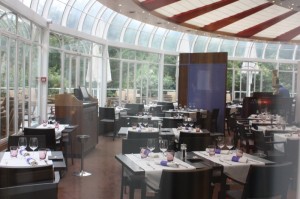



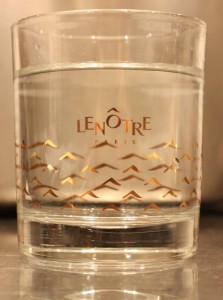

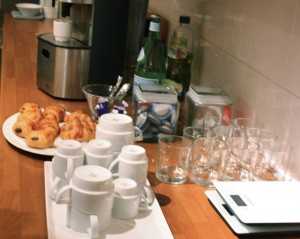
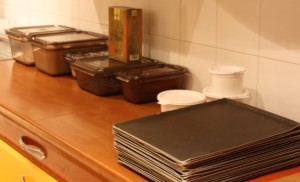


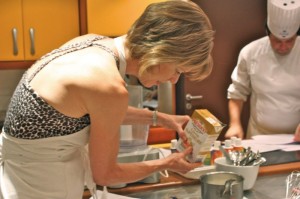












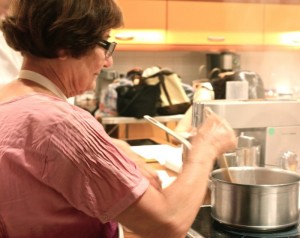








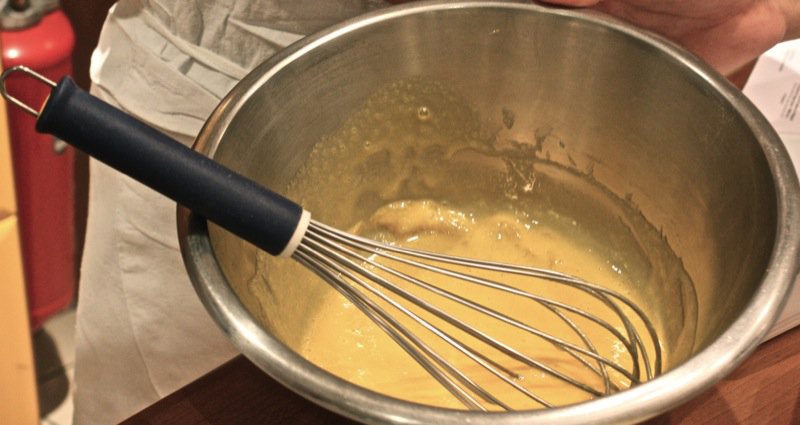





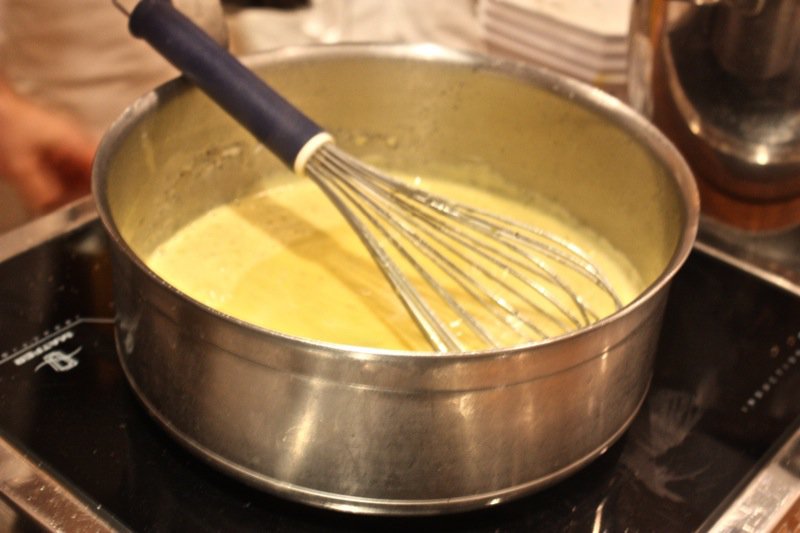


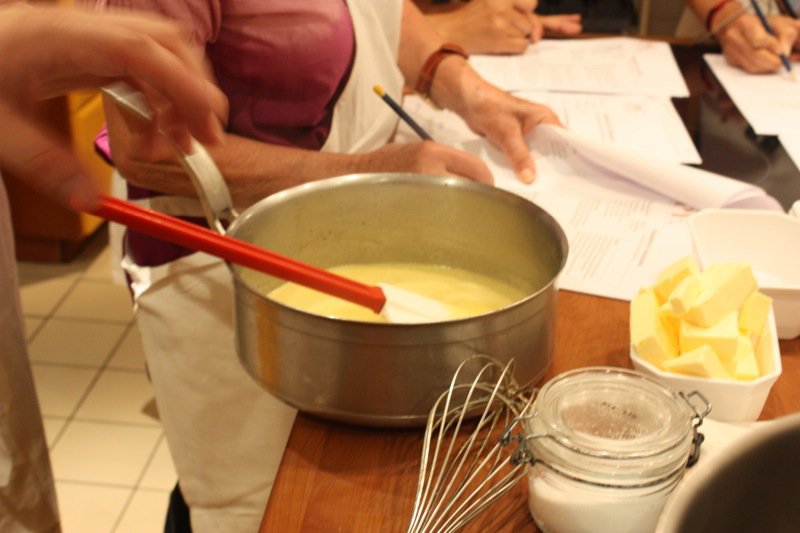
















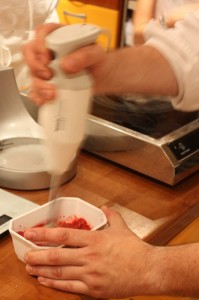


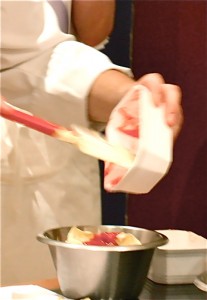



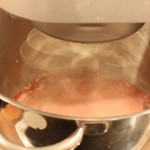










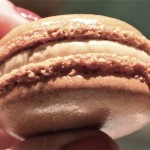



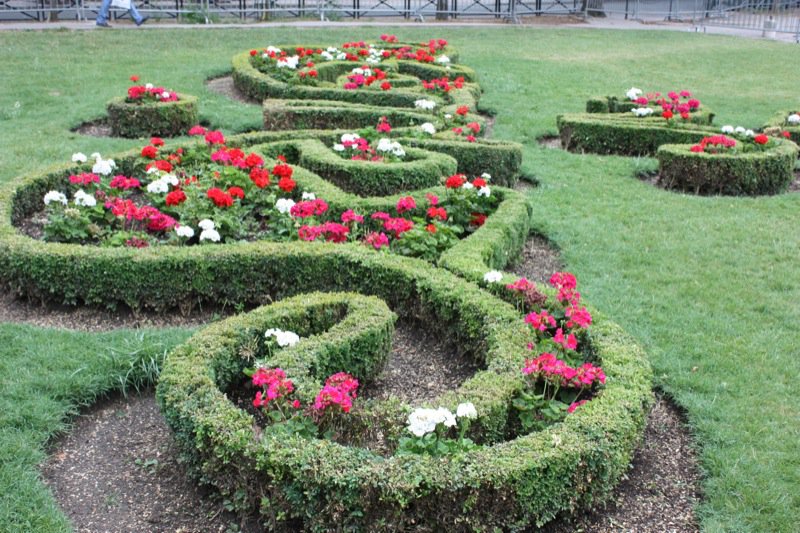





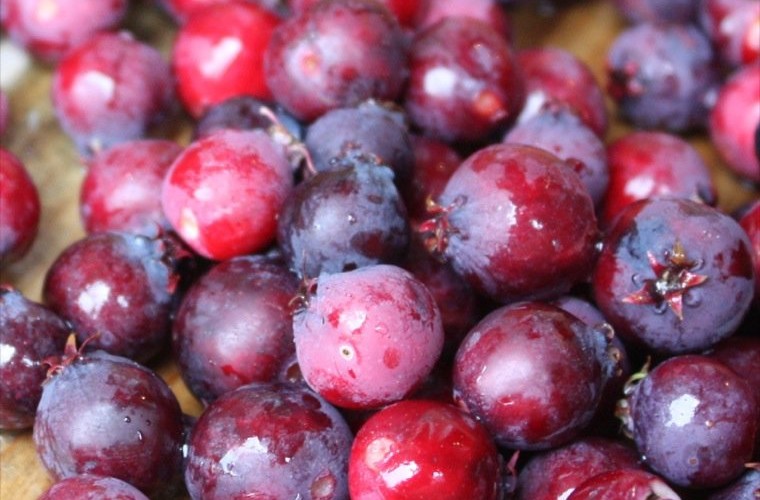



Thanks for sharing the recipes!! They sound fantastic! Can’t wait to see your post of the shells – HURRY! 🙂
Thanks Valerie! Beautiful photos. You inspire me to try new things and have the confidence to reach out. Thanks! See you when you return, but not before some more incredible posts!
Would love to make some caramel butter cream…..did you ask him why the butter were added all at once? The final result of butter cream does look great to me…
What an amazing experience Valerie… Gosh, I am GREEN with envy!
Great post.
Looks like you had another amazing trip. Lenôtre, it does not get any better than that!
You know I would have to have the salted butter caramel. A fantastic beginning for a foodie in France to attend a macaron cooking class.I hope you found your “feet”.
You brought back some great memories Valerie!
Oh you makes us all so envious! What a fabulous way to spend the summer. I’m sure you will have SO MUCH FUN practicing more at home, and with students too?! Bravo.
I would have loved to have went. What a great opportunity.
hey Valerie!
looks like you’re having a heck of a time so far in Paris (other than that bottled drinking water incident)! how lucky ducky are you!? oh and i finally just got to try the macarons at the Duchess on Sunday. Mmmm…mmmm…good! how did these ones compare? i’m expecting better, but how much better is the question. off to read your next post. thank you for sharing these recipes, although you and i both know this is way beyond my abilities…teehee. great pictures and run through as always!
Hi, LeQuan!!! I am so far behind on my reading. Actually, no connection except at the wireless cafe here in Bijeljina, Bosna, so no reading done at all of other blogs. Posting mine, and e-mail is all I can do right now… with having a holiday!!! Duchess makes really lovely macarons, but they are a bit sweet. Laduree are known to be the best and theirs are similar, but very difficult to describe the difference. Not as sweet, but I am definitely thankful and thrilled to have Duchess in Edmonton.
XO
Oh geez VAL!!!! What an experience…Oh my! I should be green with envy but actually I’m just THRILLED you’re in Paris doing this. I can’t imagine anyone more deserving – you are so passionate about good food so this is the thing for you!
Come back and educate the rest of us numbskulls on macaron making 🙂 I’ve never made them but ONEDAY when I do I’ll be knocking on your door. Have a wodnerful rest of your trip 😉
Ciao,Devaki @ weavethousandflavors
Valerie, Vous êtes vraiment stupéfiants
what a wonderful experience and super thanks for the recipes….how exciting!!
sweetlife
Everytime I get on your site, I want to eat………wonder why.
yummy!
Judy
oxoxoxoxox
Wow….I have to put this on my list of stops when next I’m in Paris. Its so funt o watch Parisien chefs cook/bake/do their thing in la centre gastronomique. Take care
Hi Valerie, thank you so much for the detailed post!
Just wondering, how early in advance did you book the class? I speak and understand very little French. Is it advisable for me to take up the class?
Alberta, They do offer classes in English! That is the one I took.
Valerie
Awesome! Hopefully they still have vacancies for classes this coming Nov. Thanks!
Looks like fun! I want to take this class this June but I have a couple of questions on Chef Anthony’s methods. I find the dryer on the bowl of buttercream a bit strange. I think exposing butter to heat would sure to melt it rather than thicken it. Perhaps it’s why the raspberry cream didn’t hold up?
Also, after reading other people’s experiences taking macaron classes in Paris (including a recent blog on a class in Lenotre), they all sifted their almond/icing sugar together to separate the large almond grains. How could both Chef Anthony and another Lenotre Chef be right on sifting issue?
HI, Madge –
First, I am not quite sure about your question on the sifting issue? But, I can say that from my experience making macarons that there are different ways of doing them and they turn out the same… oddly. People tend to use the way that works best for them. He was using the hot heat drier to evaporate the extra liquid, then the butter cream sat in the fridge. I think it was too soft as it didn’t have time to cool and thicken properly. More time in the fridge would have probably solved that, plus it was very hot outside and very warm in the room from the ovens being on. I have taken a few classes and read a lot and learned from a few people and through it all have figured out what works for me. I think you could take classes from every Chef at LeNotre who teaches macaron making and each would do it differently but they would all turn out well. Even those with a great deal of experience have inexplicable failures. That is why making the little dainties is such an incredible triumph!
Good luck. I would love to hear about your class after you go
🙂
Valerie
Thank you for your response and for sharing your class experience at Lenotre with everyone. With my limited experience in cooking, I would venture into guessing that cooking offthe liquid in the raspberry (then cooled off) in a separate saucepan would have allowed more evaporation of excess moisture rather than the use of a hot blower while it was being mixed with the butter. Is that a technique that chef Anthony would suggest for his students to do to thicken buttercream filling for macarons?
HI, Madge,
Nope. Chef Anthony was beating air into the buttercream… and clearly showed us how he prefers to do it, but you might try your idea and see how it goes!
🙂
Valerie